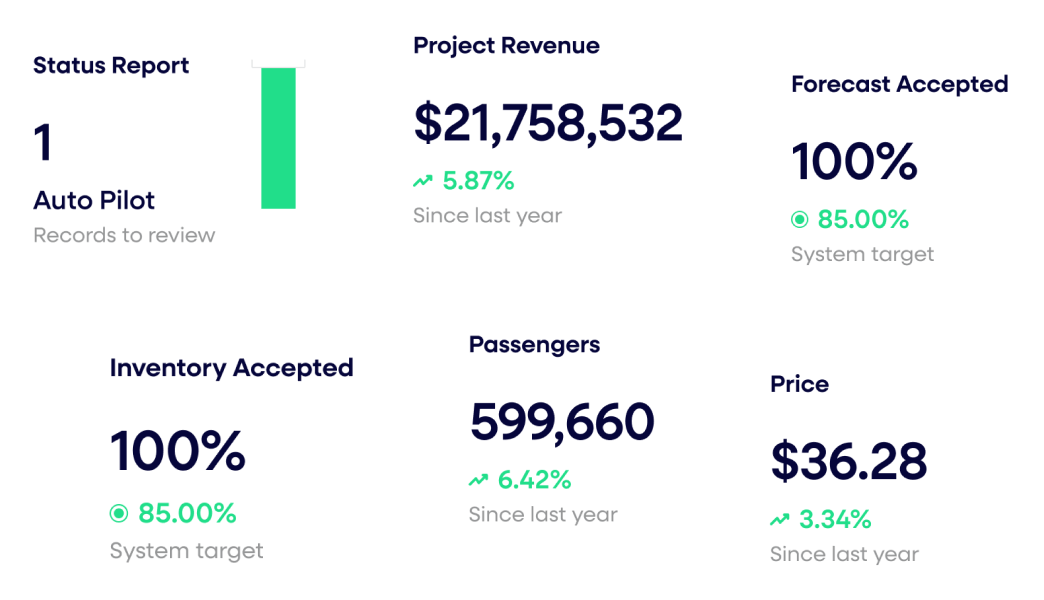From Estimates to Efficiency: Streamlining Sales Cycles and Customer Experience

Catering to a diverse customer base requires a nuanced approach to sales, particularly when dealing with highly configurable and custom products. These products make it essential to understand each customer’s unique needs without sacrificing speed and accuracy.
The traditional estimating process is inefficient and can create price exceptions for you, not to mention a poor experience for your customers. Our team of pricing experts advocates for a data-driven approach to set accurate prices at the product level to set your sales team and customers up for success from the start.
It’s time to break away from the limitations of traditional estimating approaches, which is why we’re highlighting the primary factors that complicate sales and the buying experience for your customers, and how to improve each of them.
Leverage your content to achieve stronger revenue outcomes
Understanding Customer Needs
As a manufacturer, you likely serve a wide range of customers. Some may be more sophisticated and know exactly what they need, while others may require more support throughout the sales process. But a more consultative sales approach can complicate the quoting process, resulting in an even longer sales cycle.
When you add highly configurable and custom products to the mix, quoting becomes that much more complex. Because most of your customers aren’t just buying a plain box, for example. They’re buying a custom box that has a combination of custom specs to serve a specific purpose.
Understanding the detailed ins and outs of your customers needs can vary in difficulty from business to business. The sales process will look very different for a customer who knows the exact end product they want and which customizations they need, compared to other customers who may need more hands-on help to determine the combination of specs that will work best for them.
Take a new e-commerce customer, for example, where shipping will be a primary focus. The products that will be inside each package, the distance the packages will travel on average, and a variety of other factors will determine the box that’s right for them. Or another e-commerce business might have received feedback about packages showing up damaged, and need help exploring sturdier options that will hold up better to the wear and tear of shipping and handling.
This leads to a lengthy, complicated process to combine product design, specs, order quantity, frequency, etc. into a quote on a case-by-case basis. So, when your estimating team comes up with a price, how do you know it’s the right price? Because estimating ≠ pricing.
The typical result, through no fault of their own, is just a bill of materials (BOM) – the product broken down and priced out by all its components – plus a markup.
Finding the Right Price (in time)
After all that work, you’re left with a price that you end up negotiating with your customer, creating the dreaded price exception. Which, depending on the customer, can go back and forth several times – further extending your sales process. That cycle may include reassessing markups for competitive bids or adjusting specs, among other things. But because there are so many ways you can arrive at a new price, it can be difficult to tell if you have a true pricing issue versus customers changing order details for other reasons.
What your customers really want to know is: can you provide what they need, and how much will it cost? – as quickly and accurately as possible. And if you’re estimating from scratch for every custom product, you’re creating a false level of precision that will only slow you down.
By grouping custom products that are similar enough to compare together, you can create price ranges for similar groups to start uncovering meaningful differences in willingness to pay or margin performance at certain break points of product size, BOM, customizations, etc.

How do you create related groups with custom products in the mix? Check out our latest walkthrough of what we call Peer Groups that helps simplify pricing custom products for you.
By using your product and sales data to set better prices from the beginning, your customers will have a much smoother experience while improving the back and forth in your consultative sales cycle.
Your customers don’t want to wait three weeks to learn how much something is going to cost, and your business can’t afford to continuously repeat the arduous process of estimating true custom or highly configurable products from scratch.
Giving Sales Data-Driven Guidance
While streamlining your estimating and quoting process, it’s also important to consider additional efficiencies, like where all this data lives. Instead of pencil, paper, Excel, and emails back and forth, imagine having the right price range for any product directly in front of Sales in whichever quoting system you’re using today.
By putting prices in an actionable place Sales is already using, you can start improving two sales cycle components at once: quote turnaround time and sales compliance.
Get the confidence of knowing you have the right price for every product and every customer, faster than ever before, with Pricing-as-a-Service. Want to learn more about how we solve these and other complex pricing issues for packaging manufacturers like you? Connect with a pricing expert today to schedule a 1:1 discussion about your organization’s unique pricing and quoting needs.
Last updated on August 28, 2025






